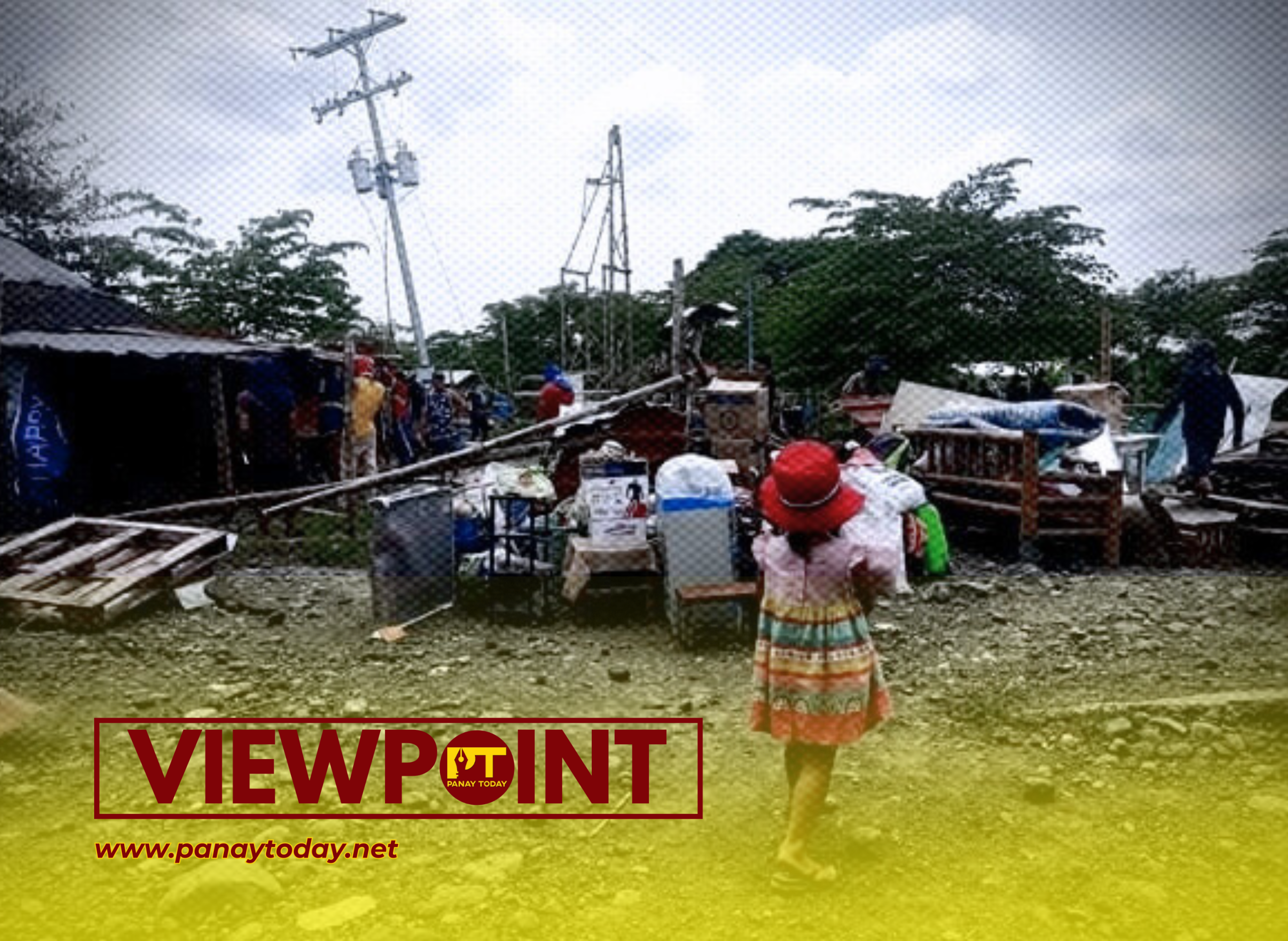By Juliane Judilla
“Wala na kami balay.“
(we have no house anymore)
These were the words of a six-year-old girl who lived within the Saul family compound in San Jose, San Miguel, Iloilo—just a few minutes after their house was torn down into mere pieces of plywood and sin.
She managed to hold on to her favorite stuffed toy, while her other toys were piled up along with her clothes, her mother’s clothes, and the appliances they could save and pack.
She had a months-old baby sibling who, at the time the demolition began, was sleeping soundly in their mother’s arms. Innocently, she kept saying how the baby was going to wake up—not in her duyan, or her parents’ bed, but in the arms of a stranger who helped their family fight to save their home.
On October 2, 2024, nine houses within the Saul family compound in Barangay San Jose, San Miguel, Iloilo were demolished to make way for residential subdivisions by Communities Iloilo Inc., a property developer affiliated with the Villar-owned Vista Land and Landscapes Inc.
Despite having a certificate of land title—awarded to the Saul patriarch by then-President Marcos Sr. through Presidential Decree No. 27—the demolition was carried out following a court order from the 14th Municipal Circuit Trial Court (MCTC), which granted “forcible entry” rights to Communities Iloilo Inc.
One year later, the land remains untended—vines crawling on a sign that reads “No Trespassing. Property of Communities Iloilo Inc.,” while a pile of dirt accumulates. Every single day, I clench my teeth when I pass by.
It bothers me. We strip the tumandok of their ancestral lands—and heck, even kill them—to build dams to irrigate farmlands. And yet, we turn agricultural lands into commercial spaces and gated subdivisions that only a few can afford and acquire.
The burden of making the lives of the rich more comfortable relies on the displacement of the poor—who are just trying to get by.
After the demolition, the families were promised to be evacuated to the town’s multi-purpose gym. I went there a few times for a walk. No one. I passed by San Jose’s gym, and yet, not a single sight of a little girl and her stuffed toy.
Looking back, residents argued that the case should fall under the jurisdiction of the Department of Agrarian Reform (DAR) due to its nature as an “agrarian dispute.”
The Iloilo Farmers and Irrigators Alliance Association (IFIAA) claimed that the dispute involves agricultural land, which should have been handled by the DAR.
A certification from the agency could have shifted the resolution of the case to the proper agrarian channels, but the agency did not intervene—not even once.
As Elmer Forro from Bagong Alyansang Makabayan – Panay said, this case is part of a broader “systematic assault on the agricultural sector…” and on the people.
A year later, I can say this was one of the most traumatic stories I have ever covered and responded to. It makes me wonder, when we’re failed and constantly exploited by the institutions meant to protect us, what is there left to do?
And yet the state wonders why people resist, why people struggle, why farmers in the countryside take up arms—when the very reason why is right in front of their eyes./PT


